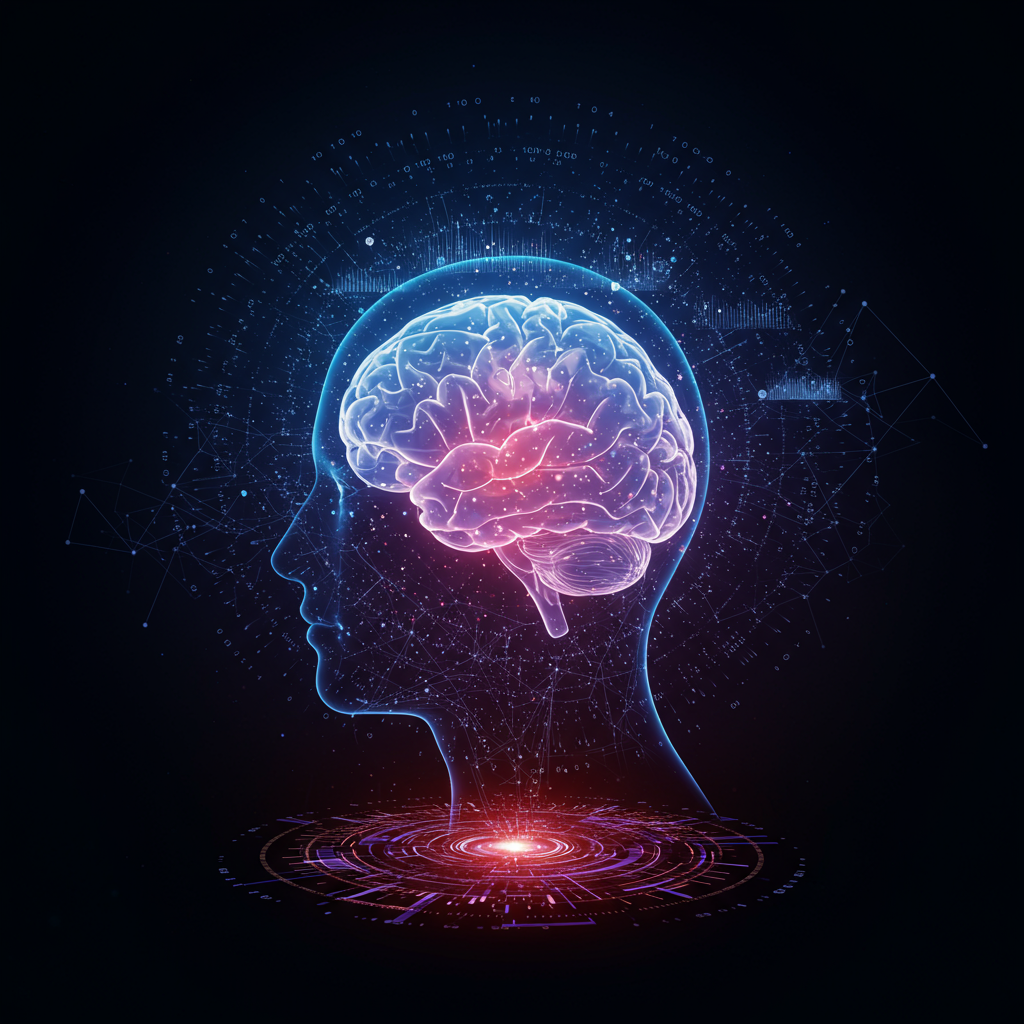The human brain holds incredible potential for memory, often untapped. Imagine recalling vast amounts of information with ease, navigating complex data, or even remembering every detail of a new encounter. This isn’t just for memory champions; it’s a skill you can learn. The ancient “Memory Palace” technique, also known as the Method of Loci, has transformed recall for millennia. Now, cutting-edge neuroscience and computer science are revealing how and why it works, offering powerful insights for enhancing your own cognitive abilities. This guide delves into the scientific secrets behind super memory, showing you how to build your own remarkable recall.
The Ancient Art of Memory: What is the Memory Palace?
At its heart, the Memory Palace is a powerful mnemonic strategy. It involves creating an imaginary, yet highly detailed, mental journey through a familiar physical space. Think of your childhood home, your daily commute, or a specific classroom. Along this mental path, you strategically place vivid, often unusual, mental images representing the information you wish to remember. When you need to recall that data, you simply “walk” through your mental palace, retrieving each piece of information from its designated spot.
This technique, dating back to ancient Greece and attributed to the poet Simonides of Ceos, leverages our brain’s exceptional capacity for spatial memory. We are inherently good at remembering places, routes, and visual cues. By anchoring abstract data to these strong spatial memories, the Memory Palace transforms difficult-to-remember facts into an accessible, engaging, and memorable narrative. As memory champion Claire Wang explains, our brains excel at remembering images, feelings, and emotions far better than abstract words or numbers.
Neuroscience Reveals Memory’s Deep Secrets
Recent breakthroughs in neuroscience are finally providing empirical evidence for the incredible effectiveness of the Memory Palace. Researchers are unraveling the neural mechanisms that make this ancient technique so potent, demonstrating that memory is far more dynamic than a simple recording device.
Event Scripts: Your Brain’s Built-in Memory Palaces
Groundbreaking research, like that led by Christopher Baldassano at Columbia University, highlights how our brains naturally structure autobiographical memories using “event scripts.” These are familiar sequences of events – like entering a restaurant, ordering food, or going through airport security. Your brain uses these scripts as neural scaffolds, making it easier to recall specific details from new experiences by fitting them into pre-existing narrative templates.
These neural event scripts, identified by distinct brain activation patterns in the prefrontal cortex (part of the brain’s default mode network), are shared across individuals. This research, published in The Journal of Neuroscience and Current Biology, suggests memory isn’t just stored; it’s actively constructed. Our brains process current events by contextualizing them within a library of existing scripts. The more effectively you activate a relevant script, the better your recall for details. This provides a clear neuroscientific basis for why the Memory Palace works so well – it mimics and leverages your brain’s natural “scripting” process, actively creating new, robust neural scaffolds for information.
Brain Rewiring: How Training Changes Your Brain
The idea that memory prowess is an innate gift is largely a myth. Studies have shown that consistent training, particularly with the Memory Palace technique, can dramatically improve recall abilities in ordinary individuals, even leading to measurable changes in brain activity.
Research published in the journal Neuron involved an untrained control group undergoing a 40-day Memory Palace training regimen. Participants practiced daily for 30 minutes, leading them to more than double their memory capacity, recalling an average of 62 out of 72 words compared to an initial 26. Importantly, these improvements were long-lasting, persisting for months without continued practice. Neurological scans further showed that after training, the brain activity patterns of ordinary participants shifted to resemble those of top memory champions. This “activity-dependent rewiring” suggests that memory training physically alters neural connectivity, fundamentally reshaping how our brains process and store information. It’s not about having a “differently wired brain” from birth; it’s about actively rewiring it through strategic practice.
The Science of Recall: What Makes Memories Stick?
Understanding how memory works at a fundamental level is key to improving it. Forgetting isn’t always a failure; sometimes, it’s an active, adaptive process where the brain “undoes” less useful connections to distill experiences into their most salient “gist,” as argued by researchers like Blake Richards and Paul Frankland. However, for crucial information, we need effective strategies to ensure long-term retention.
Beyond the Memory Palace, neuroscience-backed strategies include:
Prioritize Sleep: Quality sleep is crucial for memory consolidation, the process where short-term memories are converted into long-term ones. Aim for 7-9 hours nightly.
Regular Exercise: Physical activity, especially aerobic exercise, can increase the size of the hippocampus, a brain region vital for memory, and improve verbal memory scores, as shown in studies on individuals with early memory loss.
The Spacing Effect: Spreading out learning and retrieval over time significantly enhances retention compared to cramming. Revisit information from various sources on different days.
Active Testing: Regularly testing yourself isn’t just for assessment; it actively strengthens the neural connections associated with the information, making it easier to retrieve later.
Pay Attention: Concentration is the first step in encoding. Without focused attention, information rarely makes it into long-term memory.
Make it Relevant: Connect new information to your personal experiences or existing knowledge. The more routes your brain has to access a memory, the stronger it becomes.
Computer Science & The Future of Memory Training
The intersection of computer science and memory is opening new frontiers, particularly in combating the pervasive issue of “digital amnesia”—our increasing reliance on external storage, leading to less internal memorization. Technology isn’t just for offloading memory; it can also enhance it.
Virtual Memoryscapes: Beyond Mental Palaces
While the traditional Memory Palace relies purely on imagination, computer science allows us to create tangible, shared “Virtual Memoryscapes” (VMs). These immersive virtual environments, experienced through technologies like VR headsets (e.g., Oculus Go HMDs), extend the Method of Loci into a collective, controllable, and dynamic digital realm.
Research from Frontiers in Psychology demonstrates the potential of VMs in organizational settings. In a study involving banking employees, traditional MoL initially outperformed VMs in immediate recall. However, VMs showed no significant memory decay over a week, unlike the MoL group which experienced a notable decline. This suggests VMs offer more stable long-term retention. Crucially, VMs provide advantages for group learning: they are collective (shared among team members), controllable (customizable for specific needs), dynamic (easily updated with new content), and non-manipulable (cognitive memory acts as a check against erroneous data). By leveraging virtual reality, we can create richer, more immersive “memory palaces” that boost cognitive memory in an increasingly digital world, helping teams align their knowledge and combat digital amnesia.
AI & Machine Learning: Decoding Brain Activity
The advancements in computer science, particularly in artificial intelligence (AI) and machine learning, are indispensable to understanding the neuroscience of memory. Christopher Baldassano’s research on event scripts, for instance, used innovative fMRI imaging combined with an fMRI-optimized hidden Markov model. This pioneering computational approach allowed for data-driven segmentation of continuous brain activity, decoding complex, multi-voxel patterns that represent how our brains process narratives. Such sophisticated AI models are crucial for deciphering the intricate language of the brain, pushing the boundaries of neuroimaging.
Even memory champions like MIT sophomore Claire Wang, an electrical engineering and computer science major, are drawn to the scientific underpinnings of memory. Her journey into memory sports was fueled by a desire to understand and train the brain, eventually leading her to study the very fields that are advancing our understanding and application of mnemonic techniques. This synergy between human cognitive ability and technological insight is paving the way for unprecedented memory enhancement.
Practical Steps: Build Your Own Super Memory
You don’t need to be a memory champion to significantly boost your recall. Here’s how to apply the principles of the Memory Palace and modern memory science:
- Choose Your Palace: Select a familiar, real-world location. It could be your home, a park you frequent, or your workplace. The more vivid the mental image, the better.
- Define a Route: Establish a clear, logical path through your chosen palace. This could be walking from your front door, through the living room, into the kitchen, and so on. Number the key locations along this path.
- Create Vivid Images: For each piece of information you want to remember, transform it into an exaggerated, bizarre, or humorous image. The more multi-sensory and emotional the image, the better it will stick. For example, to remember “cottage cheese,” you might imagine a celebrity swimming in a tub of it.
- Place Your Images: Mentally place each vivid image at a distinct location along your chosen route. Ensure each location holds only one piece of information to avoid confusion.
- Walk Through Your Palace: To recall the information, mentally walk through your palace, retrieving each image from its spot and translating it back into the original data. Practice this walk-through regularly.
- Practice Spaced Repetition: Revisit your Memory Palace at increasing intervals (e.g., 10 minutes, 1 hour, 1 day, 3 days, 1 week, 1 month). This scientifically proven method strengthens memory consolidation.
- Engage Your Senses and Emotions: Memories with emotional connections or strong sensory details are far more memorable. Try to integrate feelings, smells, sounds, and tactile sensations into your mental images.
- Stay Attentive: When encoding new information, give it your full, undivided attention. Distractions inhibit the initial formation of strong memories.
Frequently Asked Questions
How does the Memory Palace technique actually work in the brain?
The Memory Palace (Method of Loci) leverages the brain’s strong spatial memory system. Our brains are highly evolved to remember locations and routes. When you associate abstract information with vivid images placed in specific, familiar mental locations, you’re essentially creating a neural “event script” or scaffold. Research, like Baldassano’s, shows this process activates areas like the prefrontal cortex, similar to how our brains naturally organize autobiographical memories. This “activity-dependent rewiring” physically alters neural connections, transforming hard-to-remember facts into easily retrievable spatial and visual information.
Can Virtual Reality (VR) truly enhance memory more effectively than traditional methods?
While traditional Method of Loci (MoL) often shows slightly better immediate recall due to highly personal mental associations, Virtual Memoryscapes (VMs) in VR environments offer significant long-term advantages, especially for shared knowledge. Studies indicate that while MoL might decay over a week, memory retained in VMs remains stable. VMs are beneficial because they are collective (shared by groups), controllable (customizable), dynamic (updatable), and can combat “digital amnesia” by actively engaging cognitive memory in an immersive, structured digital space, making them powerful for organizational learning and complex data retention.
What steps can an average person take to start using memory techniques today?
Anyone can begin enhancing their memory. Start by choosing a familiar physical location as your first “Memory Palace” – perhaps your living room. Then, create a clear mental route through it, noting distinct “loci” or spots. When you have information to memorize (e.g., a shopping list or key presentation points), convert each item into a vivid, often humorous or bizarre, mental image. Place these images sequentially at your chosen loci. Practice mentally walking through your palace, retrieving the images. Crucially, combine this with spaced repetition, revisiting your palace at increasing intervals, and always paying close attention when encoding new information.
Conclusion
The Memory Palace and Loci Method, once an ancient secret, is now being fully understood and validated by modern neuroscience and computer science. From the discovery of neural “event scripts” that mirror its function, to the evidence of brain rewiring through practice, to its evolution into cutting-edge Virtual Memoryscapes, the power of spatial memory for learning and recall is undeniable. By embracing these scientifically proven techniques, you can unlock your brain’s incredible potential, combat digital amnesia, and cultivate a truly remarkable memory. Start building your own memory palace today and embark on a journey to cognitive enhancement.




